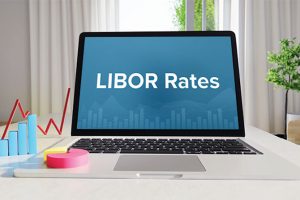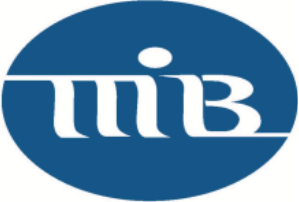By Bill Showalter, Senior Consultant, Young & Associates, Inc.
TILA. Q: We are doing a mortgage to pay off a land contract. We treat these as refinancings, but we have a lender who prefers not to use a title company. The bank orders the deed and we do a seller-side-only Closing Disclosure (CD). My question is relating to the issue date. The borrowers’ CD will show 12-21-20 for the issue with a closing date of 12-24-20 and disbursement of 12-31-20. As to the sellers, should the dates match the CD for our borrower? They will not come in till the 31st to get their monies.
A: The key dates — “Closing Date” and “Disbursement Date” — on the seller’s CD should match those on the borrower’s/buyer’s CD. The “Date Issued” on each of these documents must reflect when the applicable disclosure is “delivered” to the appropriate consumer/party — e.g., if both are put in the mail the same day, these dates will match; if they are hand-delivered on different dates, the two documents will each reflect when each was hand-delivered (even if after “closing,” in the case of the seller).
ECOA. Q: If members of an LLC (husband and wife) sign individually on a loan (as co-borrowers), is evidence of their intent to apply jointly (e.g., signatures/initials on such a statement) required? I know that if they sign as guarantors, such joint intent evidence is not required.
A: Yes, just like some owners/senior officers or their spouses in any other corporation signing as individuals would trigger the requirement.
EFTA. Q: If a customer opts into ATM/one-time debit card transactions, we have to deliver a notice or letter to the consumer, acknowledging that they have opted for this service.
If a customer chooses to opt-out later, are we required to also send a letter or notice at that time acknowledging that they have opted out?
If a customer elects to opt-out or is removed from the whole overdraft program, are we required to send a letter acknowledging this? This occasionally happens when we remove someone from the program if they have filed bankruptcy (this is stated in our disclosure as a reason they would not be eligible to be in the program). Occasionally, a customer requests to be removed. We have always provided notice to the customer in these situations where they are removed from the overdraft program. An officer of the bank is questioning if this notice of removal is required even if the customer requests removal.
A: No, Regulation E has no requirement for any notice related to a customer opting out of ATM/one-time debit card coverage under an overdraft program. In the confirmation notice sent when someone opts in, the bank may disclose the customer’s right to revoke their consent (but is not required to do so).
However, your state law may have some requirement for a notice regarding the end of any banking service, whether initiated by the bank or by the customer. You will need to check with the bank’s legal counsel about any state requirement for such good customer service.
Privacy. Q: We received a letter from the Attorney General’s Illinois office (we are based in Ohio but do national lending). They want information about an identity theft case involving a loan application; we discovered the fraud and declined the loan before funding. Do privacy regulations allow us to give out information to a state AG? I know there’s an exception allowing us to give out customer information in instances of elder abuse, but this isn’t an elder abuse case (just garden-variety ID theft).
A: There is an exception in Regulation P that allows sharing consumer/customer information in a situation like this. The “Other exceptions” section of Regulation P [§1016.15(a)(7)], the regulation’s requirements to give notice and opt-out, etc. “do not apply when you disclose nonpublic personal information … [to] comply with Federal, state, or local laws, rules and other applicable legal requirements” or “[to] comply with a properly authorized civil, criminal, or regulatory investigation, or subpoena or summons by Federal, state, or local authorities.”
TISA. Q: May the bank have a link in an online advertisement with “triggering terms” to the required additional TISA disclosures. For instance, the bank has an online ad saying, “Earn up to 3.00% APY each statement cycle during the first 12 months of opening your account when you meet our minimum cycle requirements. Click HERE to learn more.” The “HERE” link directs them to the required information. Is this compliant?
A: Yes, that would be permitted as long as the “HERE” link takes the viewer directly to the required additional information. This is spelled out in the Official Staff Commentary on Regulation DD at Comment 9 to 12 CFR 1030.8(a).
HMDA. Q: The bank owns an insurance company. Would an insurance company employee be considered an employee of the bank, allowing the income field to be “N/A”?
A: Only if the insurance company is the equivalent of a department of the bank. If it is set up as a separate company (owned by the bank or by the bank’s holding company), then the actual income relied on may not be excluded.
MLA/SCRA. Q: We have a former active-duty member who just got out of the service last week. The loan is to purchase a vehicle. Do we have to do the Military Lending rate or is this exempt?
We thought of asking for his discharge papers to show he is no longer in the service.
A: If the “Military Lending rate” you refer to is the 6% limit set by the Servicemembers Civil Relief Act (SCRA), then it does not apply in this case because the SCRA applies to pre-service debt when a service member enters active duty.
If you refer to the Military APR (MAPR) limit of 36% set by the Military Lending Act (MLA), it also does not apply in this case since the customer is no longer on active duty. However, under the MLA rule, you will still need to verify the customer’s active duty status — which can be accomplished by inquiring of the Department of Defense (DoD) database or getting a credit bureau report that includes a check of the DoD database.
BSA. Q: We have an account titled ABC Rentals LLC Jane Smith Sole Member. John and Jane Smith are both authorized signers on the account. John comes into the branch and withdraws $21,000.00 in cash from this account, and Jane is not present. How many Part I’s should be completed on the Currency Transaction Report (CTR)? My thoughts were only two, one for the LLC and one for John. But now I’m not sure.
A separate question — We have a new account titled John Smith DBA Smith Construction. The account is held under Smith’s Construction Employer Identification Number (EIN), and when I look on the state website, I do see Trade Name Registration documentation. Would this warrant a Beneficial Ownership form? The DBA is throwing me off.
A: Re: ABC Rentals — Just the two Part I’s, for ABC Rentals LLC and for John. Jane’s role as an LLC member is analogous to that of a stockholder for another corporation.
Re: Smith Construction — No, no CDD/BO form is necessary. This is a sole proprietorship, operating under a DBA/”fictitious name,” but that does not make it a “legal entity” requiring all the CDD/BO documentation.
ECOA/TILA. Q: Our borrowers applied for secondary market financing. We know right away after pulling a credit report that it will not qualify to go that route. However, we can do it as a portfolio loan. Can we now initially disclose a portfolio loan with a “variable condition commitment” that they did not qualify for the original request and qualify for a portfolio loan? Or, do we have to disclose it as an FHLB loan, then turn around and disclose it as a portfolio loan?
A: Regulation B allows for pretty much whatever back-and-forth that goes on in the application process during the 30-day countdown between “completed application” and when notice of action must be given. So, you have some flexibility in how to handle this.
If you are using their original application as an application for a mortgage loan — secondary market or portfolio, whichever they qualify for — then a notice of action taken is not required for the change from secondary to portfolio, as long as Regulation B’s timing is met. Of course, the file should be documented (e.g., a memo) as to what happened. You could send them a notice of counteroffer, if you want, as a way to document the file — and proceed with the portfolio processing.
If you require separate applications — a secondary market one that is denied, followed by a portfolio one you proceed with — you will have to have some written notice of action taken on the secondary one.
With TRID disclosures (the Loan Estimate, LE), if the decision to switch and any notice to the borrower occurs within the three business days after the original application, only one LE need be provided (presumably for the portfolio loan). If the decision, etc., occurs after that third business day, an LE for the second option better have been provided within the required time. From your description, it sounds like another LE will follow it for the portfolio loan within three business days after the switch/new application (with changed circumstances documentation if a secondary loan LE has been provided before the switch in the switch scenario).
Bill Showalter, Senior Consultant, Young & Associates, Inc., provides banks and thrifts with support for their compliance programs, independent reviews, and in-bank training and a full menu of management consulting, loan review, IT consulting, and policy systems.
This story appears in Issue 4 2020 of the Community Banker Magazine.









